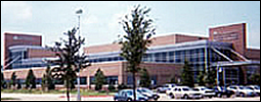The article about Pediatric Associates in CA has a nugget with a potentially outsized impact: the implication that VFC vaccines…
News 7/30/09
Emdeon announces plans for an initial stock offering of about 21.5 million shares priced at $13.50 to $15.50 a share. The claims clearinghouse and RCM vendor hopes to raise up to $332 million with the August 12th IPO.
Cardiovascular Consultants Medical Group (CA) adopts e-Medsys EHR from PracticeOne for its 13-doctor practice. The practice has utilized PracticeOne solution for over 30 years, having implemented a PM solution from one of PracticeOne’s predecessor companies in 1978.
If you have never checked out EHRtv, it’s worth a visit. The site includes an impressive collection of videos, news, and opinions on EHR and PRHs. CEO Dr. Eric Fishman and staff have produced a number of executive interviews, including one just posted with Allscripts’ Glen Tullman. The vendor demonstrations section lets you get a peak at a few products (and I suspect EHRtv plans to add even more vendors.) If you are looking to buy an EHR, check out Dr. Fishman’s “Vendor Selection 101” video, which offers advice on picking the right EHR for your practice.
MacPractice releases its iPhone Interface 2.0 which includes new tools for remote charge and planned treatment posting, staff and doctor reminders, practice management reports and doctor referral data. MacPractice is offering the interface for $800, plus $200 a year for support and updates.
Cardiothoracic surgeons may be in short supply by 2025 if current trends continue. Researchers estimate there could be a 46% increase in demand for surgeons, but a drop of at least 21% for available surgeons. Fewer residents are taking thoracic surgery fellowships, likely because those completing training have had difficulties finding employment. And the employment problem may tie back to the increased use of stents (handled by cardiologists) over heart bypass surgery (performed by cardiothoracic surgeons.)
A big welcome and thank you to our latest HIStalkPractice sponsor, eClinicalWorks. We’ve covered ECW over the past few years as it’s grown to become one of the leaders in the ambulatory EMR market. Mr. H has interviewed CEO and co-founder Girish Kumar Navani a couple of times and found him to be a sharp business leader who’s always ready to shake things up and try new business models (in case you are new to HIT, ECW has partnered with Sam’s Club to sell its EMR solution.)
If you’re interested in learning more about an HIStalkPractice or HIStalk sponsorships, drop us a note. We always appreciate the folks wanting to help us keep the lights on.
The FTC again pushes back the deadline to enforce the “red flags” rule. The FTC moved the deadline from August 1 to November 1 in order to provide additional resources and guidance to businesses. The “red flags” rule requires physicians and hospitals to adopt written plans to identify, detect, and respond to the warning signs, or “red flags,” that could indicate identity theft.
As one of the millions who regular reads Wikipedia articles, I appreciated this story. The NIH is encouraging its scientists and writers to create and edit Wikipedia articles in their field, in an attempt to make information more reliable. Earlier this month the Wikimedia Foundation hosted a Wikipedia Academy training session to encourage contributions from about 100 NIH employees.
E-prescribing appears to be paying off at Henry Ford Medical Group. Health Alliance Plan estimates that the collective administrative savings for physicians is $560,000 annually. Another $540,00 a year is saved by reduced ER visits and hospital admissions resulting from prevented adverse reactions.
Thirty-two people, including doctors, are arrested Wednesday in a major healthcare fraud bust. Federal authorities made the arrests in NY, Louisiana, Boston, and Houston in the third such sweep since May. Authorities targeted such scams as “arthritis kits” and claim this raid represented $16 million in fraudulent Medicare claims.
A physician with Urology Associates of North Texas (UANT) recounts his practice’s move from an outdated EHR to a new one (Allscripts.) They survived the scary task of moving data from one system to another, a process that required taking discrete information from the older system, identifying and classifying it, then assigning to a new destination in the Allscripts system. He concludes, “With a sound, careful approach, an organization can manage the transition from one electronic medical record system to another without losing important clinical information and/or functionality of older data.”
St. Elizabeth Healthcare (KY) announces plans to roll out Epic throughout its entire system, which includes 31 primary care offices. Beginning in September, St. Elizabeth’s will introduce EpicCare Ambulatory to its nearly 1,000 physicians.




The Urology Associates of North Texas article about EMR migration does a good job of describing a systematic, planned approach to a “daunting task”. It is clear that the team and vendor expended many design-build-test hours to accomplish the migration safely and effectively.
Many practices lack the resources to perform a technolgy-supported migration such as this. Another approach is to rip-and-replace, requiring all clinical data to be entered as New in the new EMR, along with a migration workflow that makes paper charts inaccessible to the physicians after a planned number of days or weeks.
Examples of successful migration strategies can be found on the HIMSS Davies Award website.